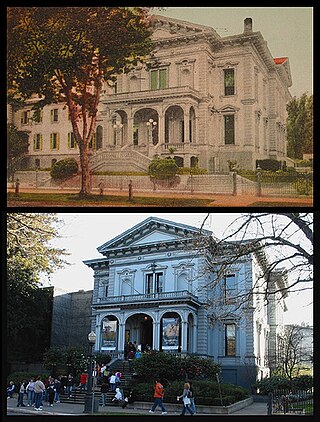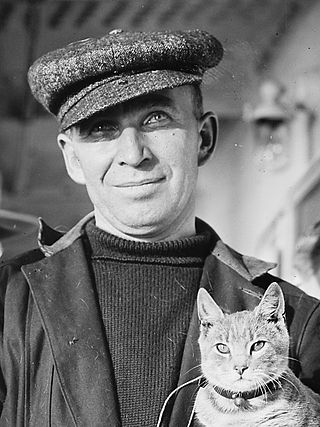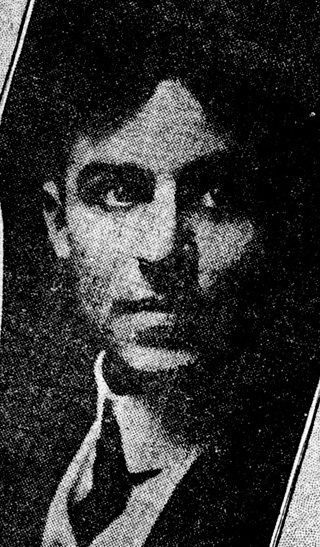
Kite aerial photography (KAP) is a type of photography. A camera is lifted using a kite and is triggered either remotely or automatically to take aerial photographs. The camera rigs can range from the extremely simple, consisting of a trigger mechanism with a disposable camera, to complex apparatus using radio control and digital cameras. On some occasions it can be a good alternative to other forms of aerial photography.

Aerial photography is the taking of photographs from an aircraft or other airborne platforms. When taking motion pictures, it is also known as aerial videography.

William Dickson Boyce was an American newspaper man, entrepreneur, magazine publisher, and explorer. He was the founder of the Boy Scouts of America (BSA) and the short-lived Lone Scouts of America (LSA). Born in Allegheny County, Pennsylvania, he acquired a love for the outdoors early in his life. After working as a schoolteacher and a coal miner, Boyce attended Wooster Academy in Ohio before moving to the Midwest and Canada. An astute businessman, Boyce successfully established several newspapers, such as The Commercial in Winnipeg, Manitoba, and the Lisbon Clipper in Lisbon, North Dakota. With his first wife, Mary Jane Beacom, he moved to Chicago to pursue his entrepreneurial ambitions. There he established the Mutual Newspaper Publishing Company and the weekly Saturday Blade, which catered to a rural audience and was distributed by thousands of newspaper boys. With his novel employment of newsboys to boost newspaper sales, Boyce's namesake publishing company maintained a circulation of 500,000 copies per week by 1894. Boyce strongly supported worker rights, as demonstrated by his businesses' support of labor unions and his concern for his newsboys' well-being.

Rephotography or repeat photography is the act of photographing the same site twice, with a time lag between the two images; a diachronic, "then and now" view of a particular area. Some are casual, usually taken from the same view point but without regard to season, lens coverage or framing. Some are very precise and involve a careful study of the original image.

Arnold Genthe was a German-American photographer, best known for his photographs of San Francisco's Chinatown, the 1906 San Francisco earthquake, and his portraits of noted people, from politicians and socialites to literary figures and entertainment celebrities.
Frank Gohlke is an American landscape photographer. He has been awarded two Guggenheim fellowships, two fellowships from the National Endowment for the Arts, and a Fulbright Scholar Grant. His work is included in numerous permanent collections, including those of Museum of Modern Art, New York; the Metropolitan Museum of Art; and the Art Institute of Chicago.

Arthur Clarence Pillsbury (1870–1946) was a United States photographer, inventor, and filmmaker, known through his innovations which extended human vision at a critical time in our history. Although many make the mistake of focusing on his sensational landscapes of Yosemite National Park, photos of the 1906 San Francisco earthquake, and time lapse photography of flowers, he had seen the potential of film for rapidly increasing our understanding in every part of science.

Lizzie Edith Irvine was an American photographer who documented the 1906 San Francisco earthquake. Born into a wealthy family in Northern California, Irvine became interested in photography as a child and continued throughout her young adult life, photographing the progress of the Electra Power Project near her home. In 1906, Irvine happened to arrive in San Francisco just hours after the earthquake struck, and was able to take photographs of the aftermath despite the armed guards posted around the city trying to downplay the extent of the damage. In her later years, Irvine suffered from severe joint pains and became addicted to painkillers and alcohol. Following her death, her photographs were donated to the Brigham Young University Library in Provo, Utah.
The following outline is provided as an overview of and topical guide to photography:
William A. Garnett was an American landscape photographer who specialized in aerial photography.

Chester Melvin Vaniman was an American aviator and photographer who specialized in panoramic images. He shot images from gas balloons, ships masts, tall buildings and even a home-made 30-metre (98 ft) pole. He scaled buildings, hung from self-made slings, and scaled dangerous heights to capture his unique images.
Mark Klett is an American photographer. His work is included in the collections of the Smithsonian American Art Museum, the Museum of Fine Arts Houston and the Museum of Modern Art, New York.

Banquet photography is the photography of large groups of people, typically in a banquet setting such as a hotel or club banquet room, with the objective of commemorating an event. Clubs, associations, unions, circuses and debutante balls have all been captured by banquet photographers.

Adelaide Hanscom Leeson was an early 20th-century artist and photographer who published some of the first books using photography to illustrate literary works.

At 05:12 AM Pacific Standard Time on Wednesday, April 18, 1906, the coast of Northern California was struck by a major earthquake with an estimated moment magnitude of 7.9 and a maximum Mercalli intensity of XI (Extreme). High-intensity shaking was felt from Eureka on the North Coast to the Salinas Valley, an agricultural region to the south of the San Francisco Bay Area. Devastating fires soon broke out in San Francisco and lasted for several days. More than 3,000 people died, and over 80% of the city was destroyed. The event is remembered as the deadliest earthquake in the history of the United States. The death toll remains the greatest loss of life from a natural disaster in California's history and high on the lists of American disasters.

James Joseph Marshall was an American photographer and photojournalist who photographed musicians of the 1960s and 1970s. Earning the trust of his subjects, he had extended access to them both on and off-stage. Marshall was the official photographer for the Beatles' final concert in San Francisco's Candlestick Park, and he was head photographer at Woodstock.
David Avison was an American photographer and physicist, best known for his use of a wide angle lens to capture nature, crowds, and portraits. Focused on panoramic photography, Avison photographed Chicago's urban landscapes, turning to Chicago's beaches for his contribution to the documentary project Changing Chicago. Avison spent the bulk of his photographic career in Chicago before moving to Boston in 1997.

Oscar Maurer was a nationally recognized Pictorialist photographer based in California. His photographs appeared in Camera Work, Camera Craft, The Camera, and other photography journals. His studio in Berkeley, designed by Bernard Maybeck and built in 1907, is an architectural landmark.
Raper James Waters was an American commercial photographer in California and Nevada.

Edgar A. Cohen was an American photographer known for his early landscape photography, which captured landmarks such as Yosemite Falls, Mount Tamalpais, and the California Missions. He documented the aftermath of the 1906 San Francisco earthquake.
















